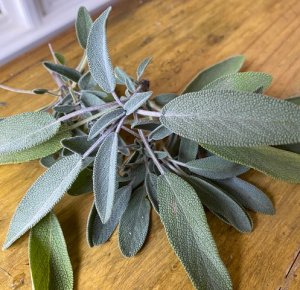I have resisted writing about Corona so please believe me when I say that this post won’t dwell on it too much; rather the good things that have come of it.
In this topsy turvy world, it has become difficult to find calm in the every day. The fundamental changes that the Corona virus has wrought upon our lives will be with us for years to come; some (surprisingly) quite delightful and some horrendous. When it first raised its hideous head, I coped with the subsequent stress and anxiety by praying to the God of Small Things (This is who you pray to for small, instant moments of serendipity. For example, when you are looking for a park and Bingo!, there it is right outside the front of the shop you wish to visit) and refusing to listen to, or watch, any media. I reverted to streaming things from my childhood back when the world was happy, shiny and full of promise. I watched (and still do) The Sound of Music endlessly. I reread Harry Potter and even streamed The Magic Faraway Tree on Audible. My family thought I’d gone quite mad, but it was my coping mechanism; a way to distract me and ease my worry. Yes, and like so many, our dogs have been over-walked.

The other thing I have consciously done is to try and find one little moment of wonder each day. I had forgotten how it can be found in the simplest of places and how important it is. It is a true salve for the spirit.
When searching out wonder and joy I begin by thinking of the five senses. They are a force that will forever have the ability to take us to another time and place. For example, when I smell the delicious, heady scent of a Daphne flower I am instantly taken back to days spent with my Grandpa in his beautiful garden in the Dandenongs in Victoria. Give me a piece of Lego and there I am, sat on the floor with my children on Christmases past assembling the latest masterpiece. The sound of morning bird song is so elemental that it always fills me with joy.

My moment of wonder yesterday came about via the kitchen and my use of a simple herb. Salvia officinalis* or common Sage is a delightful culinary plant. Imagine you have just picked a small bunch. The leaves are a beautiful grey/green colour and are almost furry to the touch. They release a little oil when gently crushed and have the scent of pungent, earthy mint. My girlfriend refers to it as a witchy-poo herb as it is regularly burned in smoking ceremonies to clear the heart and mind. It is very, very good for you.
I use it regularly. It is best either stuffed up the bum of the chook you are about to roast, added to any pumpkin dish (think pumpkin and sage risotto), super yummy in most Ragus and best of all turned into a nutty, sweet burnt butter. The last is where my moment comes in. Heading outside yesterday, I picked a small bunch and then stripped the leaves from the stems. The smell was utterly delicious. Using an old tiny saucepan which belonged to my Grandma, I melted two enormous knobs of butter. Once melted I popped in the sage leaves. Slowly they began to crisp. At this point you need to be a wee bit patient. The butter will eventually get to the point where it begins to clarify and literally starts to burn. You know it is ready by its smell. It will suddenly begin to smell nutty, turn a dark brown colour and the leaves will crisp perfectly (they will also have turned brown). It is done! Remove from pan and drizzle over anything you wish. In my case, it was over some baked ricotta on toasted sourdough.

So there were three moments that I relished yesterday tied to one little plant. The picking and smelling of the sage, the memory of my Grandma using the little saucepan to make chocolate custard and the taste of the burnt butter oozing through the ricotta. Who knows what wonder I’ll experience tomorrow. All I know is I’ll be looking for it and will cherish every second.
What tiny moment of wonder have you experienced lately? I’d love to know.
Until next time…
* Salvia is the largest genus of plants in the family Lamiaceae which includes mint and has over a 1000 species of shrubs, herbaceous perennials, and annuals.
Leave a Reply